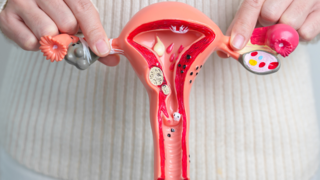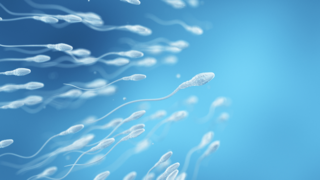In this article:
These might be early signs of implantation, one of the first biological milestones of pregnancy. Implantation is when a fertilised egg burrows in the thickened lining of the uterus, usually about 6 to 10 days post-ovulation.
The process is silent and microscopic, but it often triggers subtle physical and hormonal changes within the body. Whether you’re trying to conceive or are simply in tune with your cycle, understanding implantation symptoms is an essential way to start recognising your body’s early pregnancy signs.
Implantation: A Brief Overview
Implantation happens 6-10 days after fertilisation, when the fertilised egg, known as a blastocyst by then, embeds into the uterine lining. This is crucial in forming a healthy pregnancy. After ovulation, the uterine lining gets thicker, hoping to welcome an embryo if implantation occurs.This complex process causes the body to undergo hormonal signals and physical transitions in the uterus. Timing of implantation is key. It typically occurs when the uterine lining is thickest, creating the optimal environment for an embryo to implant and grow.
The blastocyst implants into the endometrium, nourishing the embryo. This is a crucial developmental stage for a successful pregnancy since it enables the embryo to obtain the required nutrition and support for development.
The Implantation Process: What Happens in the Body?
Implantation is the process by which a fertilised egg attaches to the lining of the uterus and is the moment when pregnancy effectively begins in the body. This initiates numerous hormonal and physical changes in the body. The most prominent ones include the production of hCG.If fertilisation takes place after ovulation, the sperm fertilises the egg in the fallopian tube and a zygote is formed. Over the next 3 to 5 days, this single-cell zygote continues to divide rapidly. This is mainly as it traverses down the fallopian tube to the uterus. Once it reaches the uterus, it is called a blastocyst, a group of dividing cells surrounded by fluid.
Implantation starts about 6 to 10 days after ovulation when the blastocyst hatches. It implants in the thickened endometrial lining of the uterus. This attachment is not passive, it actively bores into the lining. This produces milder cramping or light spotting in some women.
Once the blastocyst is implanted, it signals the body to produce human chorionic gonadotropin (hCG), the pregnancy hormone. hCG helps the corpus luteum in the ovary continue making progesterone, which is necessary to maintain the uterine lining and prevent menstruation. This creates the right environment for the embryo to develop.
hCG is also what pregnancy tests detect, usually starting 10 to 14 days after ovulation, depending on the test's sensitivity. This marks the beginning of pregnancy as the embryo starts forming the placenta. This later supplies nutrients and releases hormones for the growing foetus. The implantation process signals the start of pregnancy and a shift in the body’s hormone levels.
Prominent Signs and Symptoms of Implantation
Below are some of the most observed physical signs indicating implantation during early pregnancy:Mild cramping
This happens as the fertilised egg implants into the uterine lining, which can irritate. (You may also feel slight lower back pain or cramping around this time.)
While many may experience serious period cramps, implantation cramping is more subtle and less discomforting and can potentially go unnoticed or be confused with premenstrual sensations.
Spotting or light bleeding
Spotting is much lighter than menstrual bleeding and can be pink or brownish-red in colour. Implantation bleeding is not as prolonged as a normal period as it can last from a few hours to a couple of days and does not include a heavy flow or clots.
Rather than necessitating products like tampons or pads, it usually presents as streaks or specks on toilet paper. Consult your doctor as soon as you notice heavy bleeding/clots; these could be signs of complications like miscarriage or other medical conditions.
Changes in vaginal discharge
The progesterone levels in the woman’s body increase, building up the uterine lining and creating an environment resistant to infections, thickening the discharge to sustain the early embryo.
Some people describe their discharge as creamy or slightly sticky during this phase. Although these changes are normal, foul-smelling discharge or unusual colours (apart from white) such as green or yellow could be a sign of infection and should be promptly assessed by a doctor.
Breast tenderness
During this time, you may find that your nipples are more sensitive or your breasts are slightly enlarged. Wearing a supportive bra can alleviate discomfort caused by breast tenderness.
Nausea
- Timing and duration: Nausea usually starts at around week 5 to 6 of gestation (post-implantation) and is associated with the rise in hCG (human chorionic gonadotropin) levels.
- Hormonal role: Elevated hCG levels are strongly associated with nausea and vomiting in early pregnancy.
- Digestive effects: Progesterone can relax smooth muscles, which slows digestion and may worsen nausea and upset stomach.
Headaches
These changes are the body’s normal response to supporting early pregnancy. Hydration, rest, and relaxation techniques can help manage headaches. Nonsteroidal anti-inflammatory drugs (NSAIDs) such as ibuprofen might provide some benefit in the early stages but always check with a doctor before taking medication, especially if you think you might be pregnant.
You can maintain better overall health by simply avoiding common triggers like caffeine, alcohol, and smoking and maintaining a healthy lifestyle. When headaches become chronic or severe, it is crucial to consult a healthcare professional to determine the cause and find appropriate treatment.
Fatigue
Proper fatigue management involves enough rest, regular relaxation techniques, and a healthy lifestyle. Avoid stimulants like caffeine and alcohol, which can make tiredness worse.
While caffeine offers a temporary energy boost, it blocks adenosine which is the chemical responsible for making you sleepy. This leads to a rebound effect of greater fatigue once it wears off. You should see a medical professional to rule out other conditions for chronic or debilitating fatigue.
Increased urination
The hormone increases blood flow to the kidneys, filling the bladder faster and leading to more trips to the bathroom. Mild as they are, these are some people’s first signs of pregnancy. It occurs before a missed period but will vary from person to person.
Other elusive signs include the mucous plug from pregnancy around the cervix (usually no symptom, although it can cause spotting) and a subtle rise in basal body temperature, which may stay elevated after implantation.
Mood swings caused by rapid hormonal changes can also impact emotional regulation. These particularly increase progesterone and oestrogen in the body.
Less Common Symptoms
Some women may notice other symptoms during early pregnancy, such as:- Bloating: Hormones can make you feel bloated or full in your stomach.
- Food Aversions or Cravings: You may suddenly dislike certain foods or crave others, which is normal in early pregnancy.
- Dizziness: Hormonal shifts can cause you to feel dizzy or lightheaded, especially when standing up.
- Constipation: You might feel more constipated than usual because of hormone changes.
Implantation vs. PMS Symptoms
Implantation can cause light spotting and cramping, which are also common with PMS. But it can also lead to things like mild bloating, tender breasts, mood swings, a metallic taste in the mouth, sensitivity to smells, and feeling extra tired.These symptoms can be similar to PMS, but knowing the differences can help you understand what’s going on in your body.
Similarities
Implantation and PMS share several symptoms, which is why they’re often confused. These include:- Mild cramping in the lower abdomen
- Breast tenderness or swelling
- Mood swings and irritability
- Fatigue or tiredness
- Changes in vaginal discharge
Key Differences in Timing and Intensity
While symptoms are alike, they are different in timing and severity:- Timing: PMS symptoms generally occur 1–2 weeks before menstruation, while implantation symptoms happen 6–10 days after ovulation, just before your expected period.
- Intensity: PMS cramps tend to be more intense and persistent. Implantation cramps are milder and shorter-lived.
- Bleeding: PMS may lead to a full period, while implantation bleeding is usually light spotting, lasting a day or two.
- Basal body temperature (BBT): BBT tends to stay elevated after implantation, whereas it typically drops just before menstruation begins.
- Mood swings: PMS-related mood swings are usually more intense and longer-lasting than the subtle emotional shifts sometimes seen after implantation.
Tips for Differentiating Between the Two
- Track your cycle and ovulation: This helps pinpoint when implantation could occur.
- Monitor your basal body temperature (BBT): A sustained rise beyond the usual luteal phase length may suggest implantation.
- Watch for spotting patterns: Implantation bleeding is lighter and shorter than a period.
- Take a pregnancy test: Wait at least 3–4 days after suspected implantation or after a missed period for accurate results.
- Listen to your body: Small changes in energy, appetite, and emotional state may indicate early pregnancy over PMS.
You should always seek personalised advice from a healthcare provider if you are worried or have questions about your symptoms.
FAQs on How to Know if Implantation Has Happened: Signs and Symptoms
- How do you confirm implantation?
Implantation can only be confirmed through a positive pregnancy test, which detects hCG levels in urine or blood. For accurate results, wait 3-4 days after suspected implantation or until after a missed period. - Is implantation painful?
Implantation is not typically painful. Some may experience mild cramping, similar to menstrual cramps, but intense pain is uncommon. If severe pain occurs, consult a healthcare professional. - How long is pregnancy from implantation?
Pregnancy is calculated from the first day of your last menstrual period (LMP), not implantation. Implantation typically occurs 6-10 days after ovulation, but pregnancy duration remains approximately 40 weeks from LMP.






